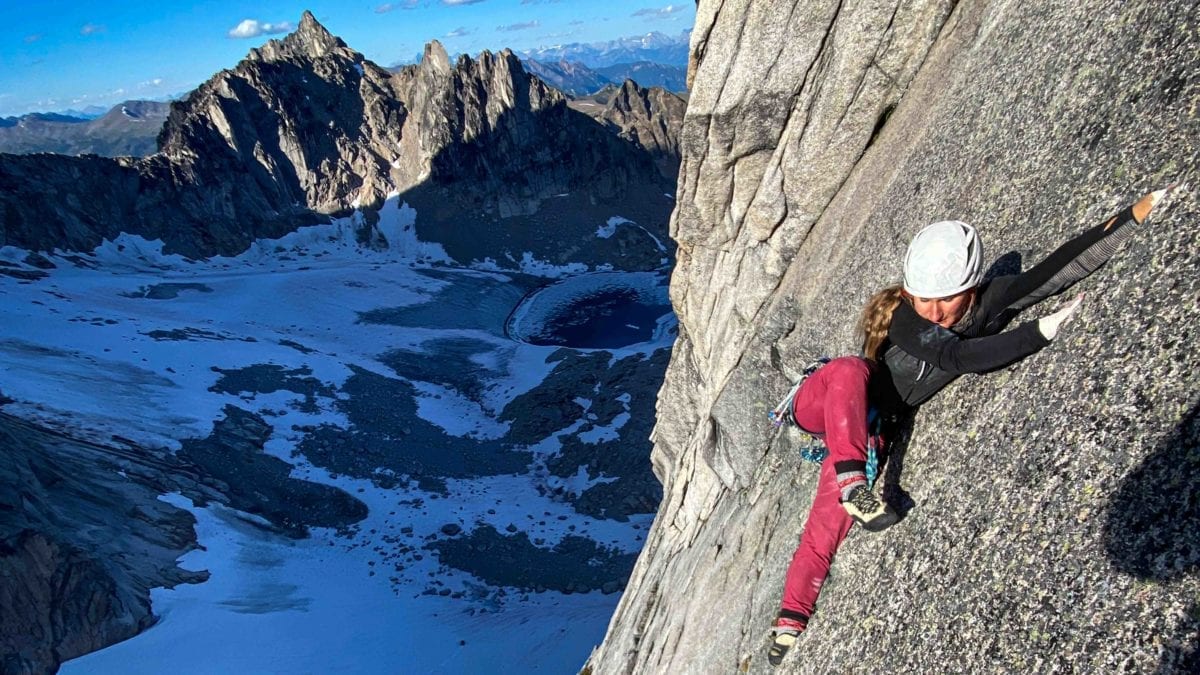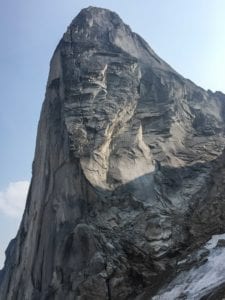A Bugaboos Must-Climb: Sunshine Crack 5.11-, Nine Pitches
This is one of the most celebrated alpine 5.11 climbs in Canada
 Photo by: Victoria Sowinski
Photo by: Victoria Sowinski
Sunshine Crack 300m is one of the most splitter alpine rock climbs in Canada. The sustained route follows a striking, continuous crack system up the north face of Snowpatch Spire, weaving through finger cracks, offwidths, handrail traverses and several roofs. For trad enthusiasts confident at the grade, Sunshine Crack is a must-do climb.

Sunshine Crack was first climbed in July 1980 by Alex Lowe and Shelley Scott. The duo originally graded the crux roof 5.10+, though it is now widely considered to be a bouldery 5.11-. When Steve House first climbed the then 5.10+ route in 1991, he wrote in Rock and Ice of the immense intimidation before the climb — wondering if he could possibly climb the grade 5.10+, or an Alex Lowe route. House says it is his favourite “5.10” of all time, while the current Atkinson and Piché guidebook touts it as “one of the better climbs in the Bugaboos”. Those are choice words for Canada’s alpine granite wonderland.
Sunshine Crack is located less than a 40 minute hike from the Applebee Dome campground heading towards the Bugaboo-Snowpatch Col. Partway up the Col, look for the imposing offwidth on your left and traverse loose scree ledges to the base of a small roof. A confident party may use a single #5 for the offwidth and bump it along, while new wide-crack climbers will appreciate a #5 and #6 for the crux. A standard double rack up to #4 for the remaining pitches is sufficient.

The Bugaboos guidebook breaks up Sunshine Crack into nine pitches but many will opt to skip the two gear belays and climb the route in longer rope lengths. The final pitch can be done in a stunning 60m pitch with options going left or right. If you have enough gas in your tank, traversing right at 5.10+ will almost certainly leave you with a giddy smile on your face. To descend, use two ropes and follow the bolted stations back down to your packs. Be sure to avoid the tedious approach scree by walking 10m climber’s left along the base ledge to find two more bolted rappel stations down to the glacier.
The north-facing wall is in the shade until mid-afternoon causing many parties to skip the alpine start and wait for warmer temperatures. Regardless, pack an insulated coat and belay gloves — that offwidth will only keep you sweating for so long!


